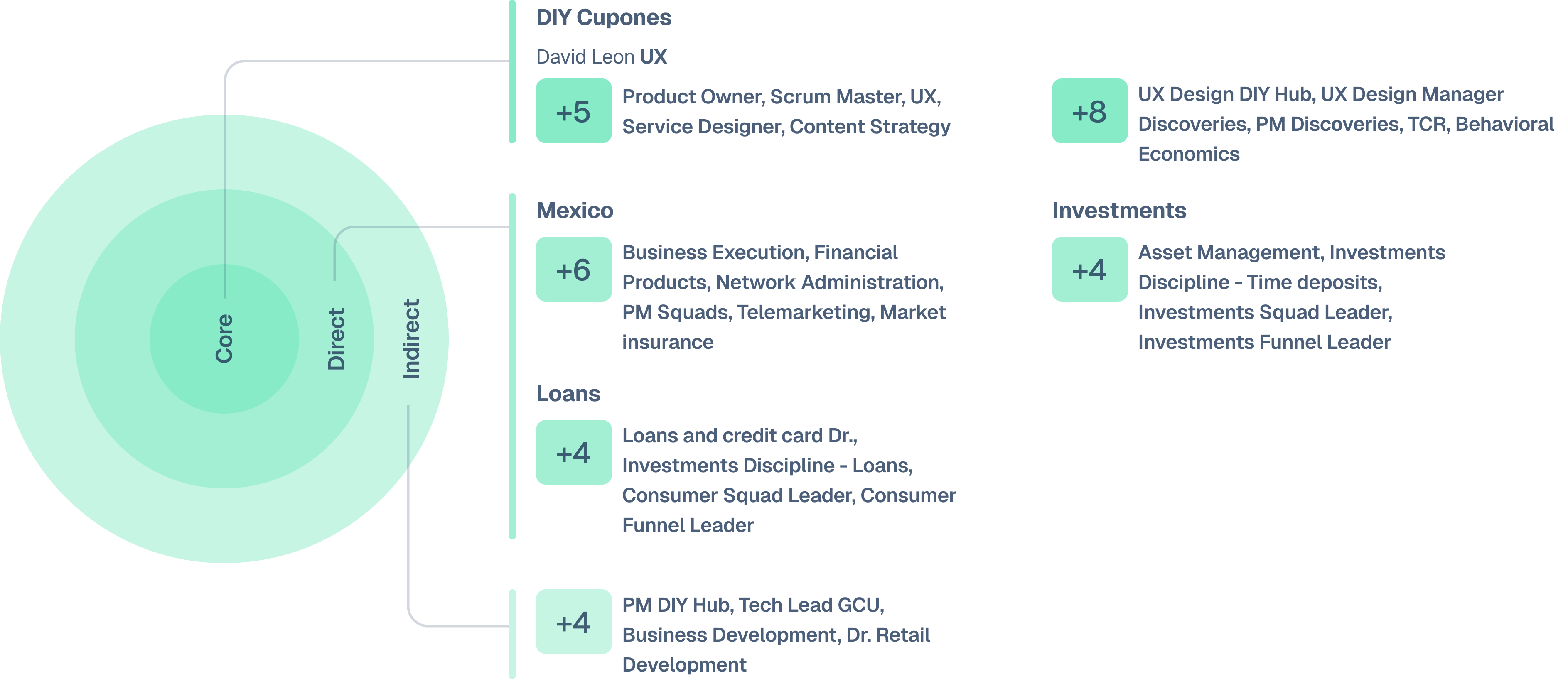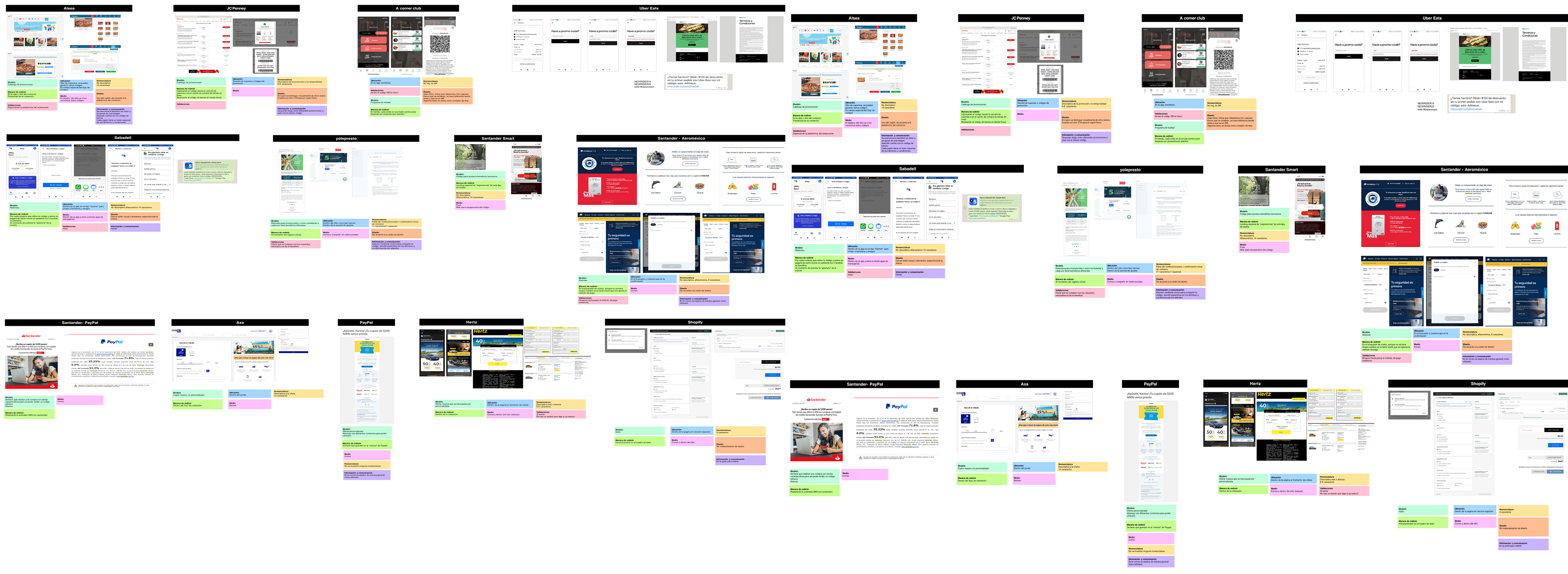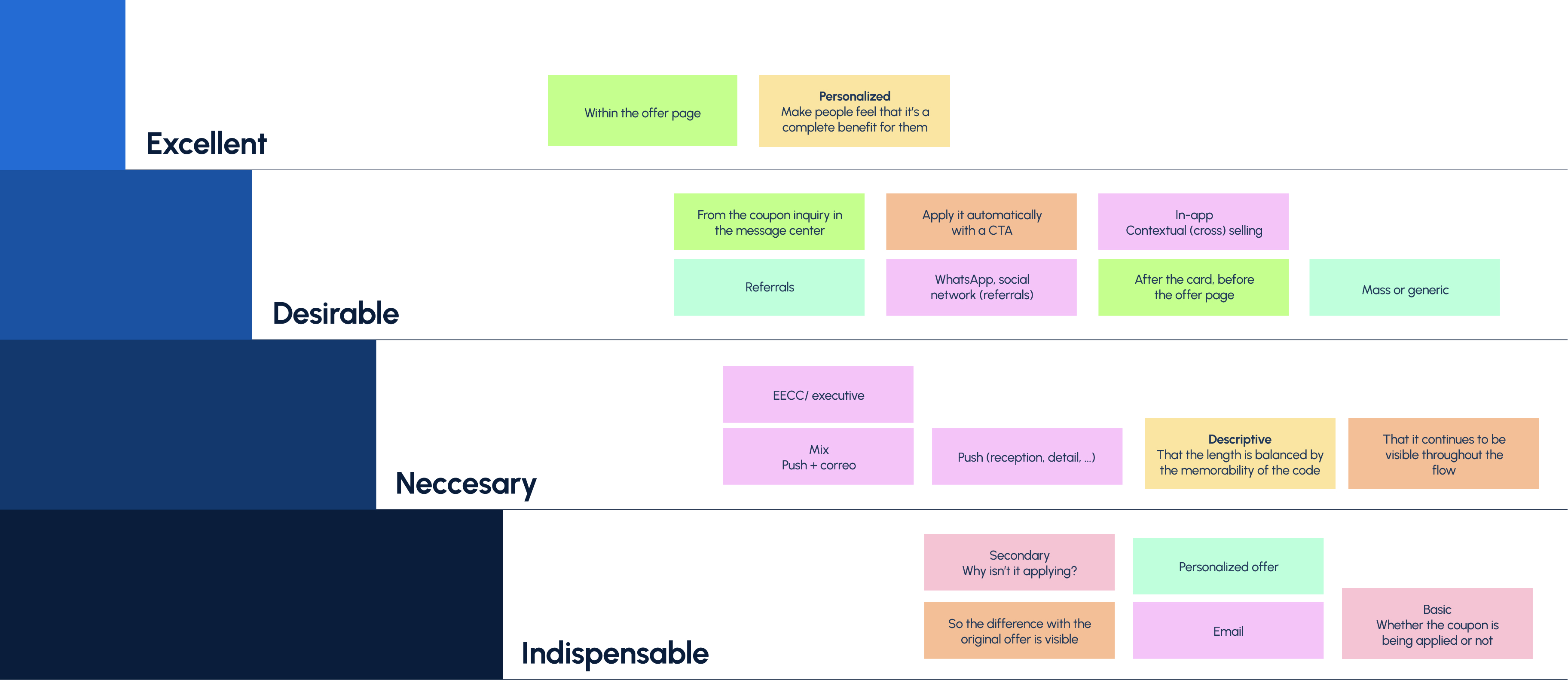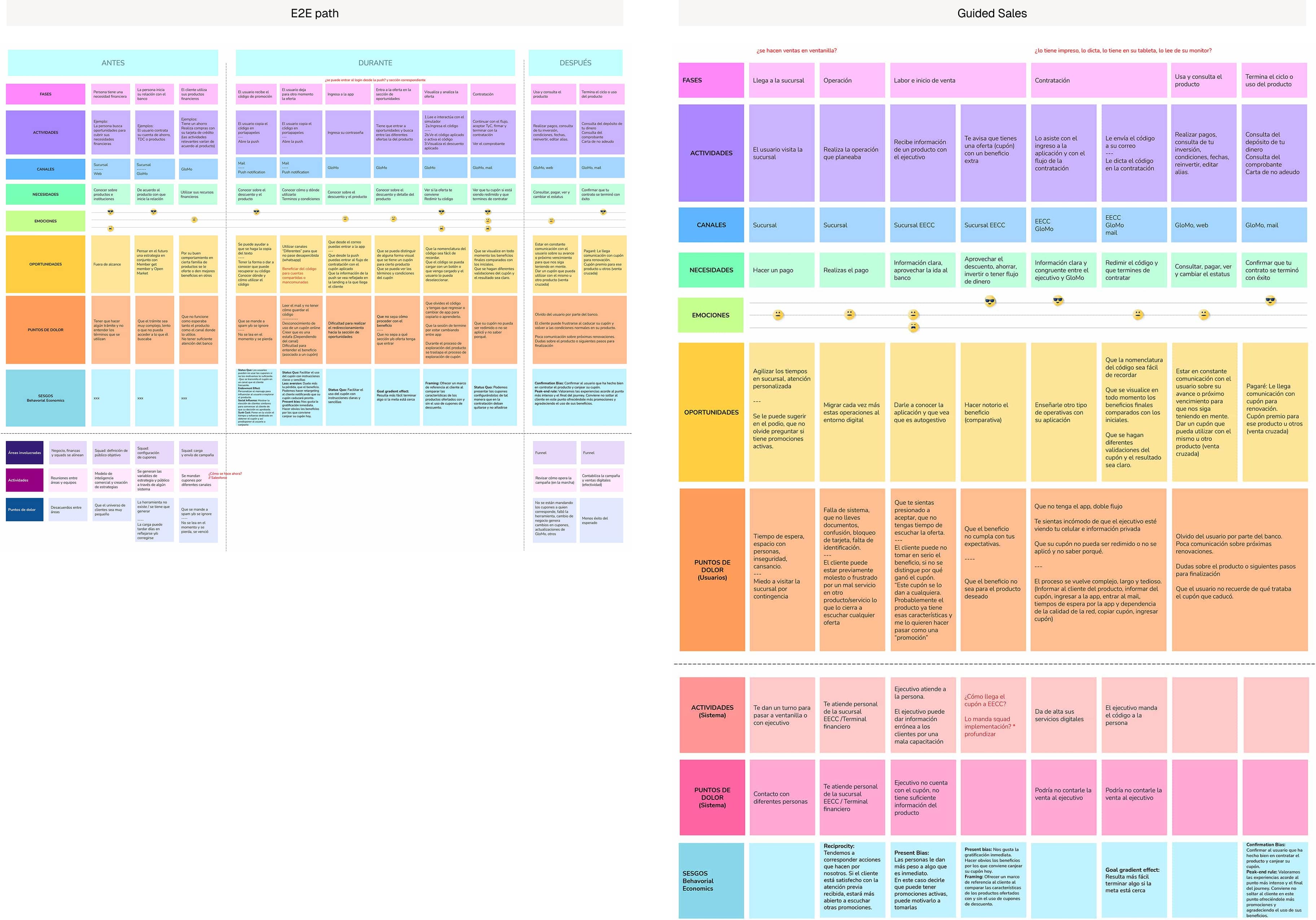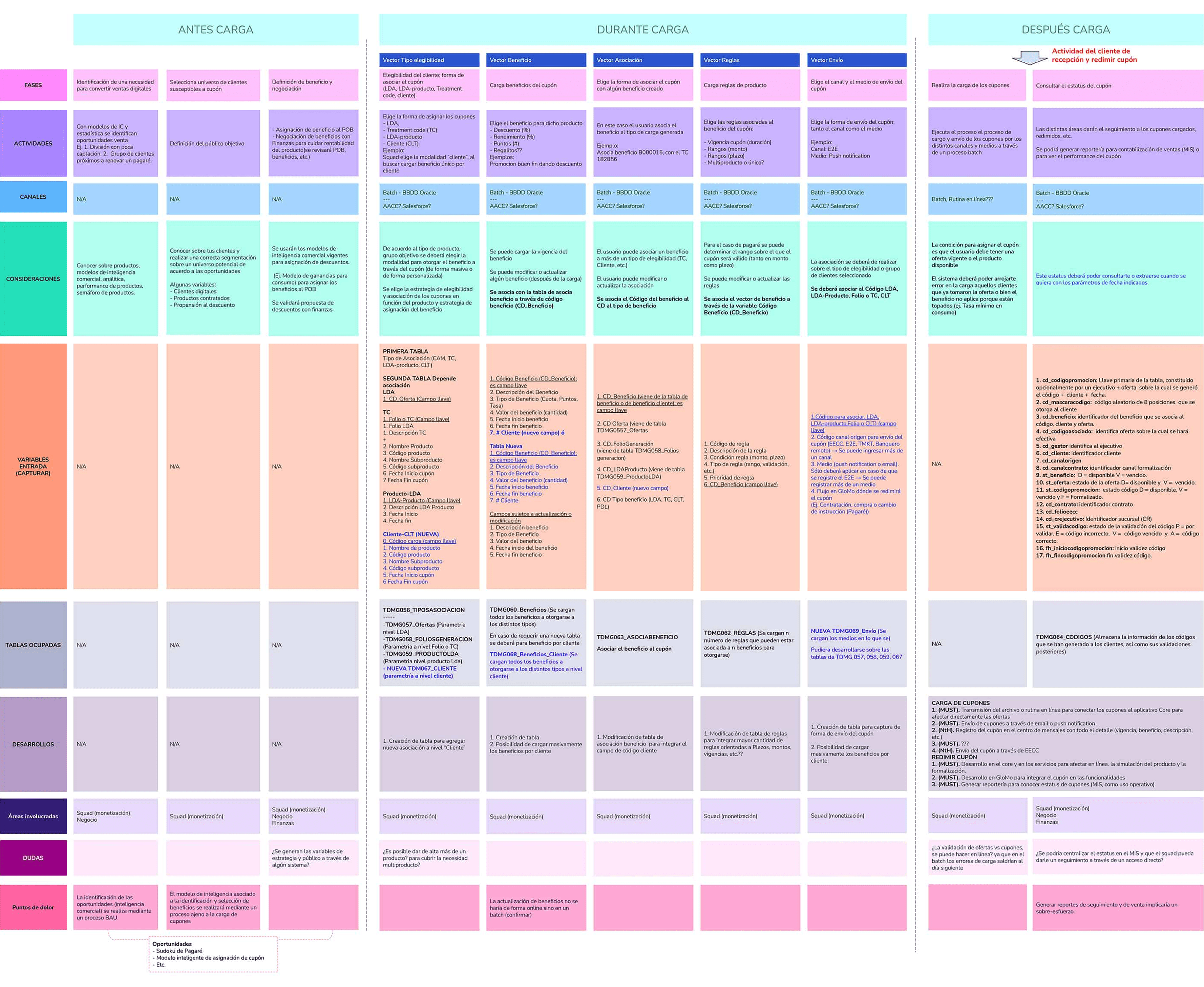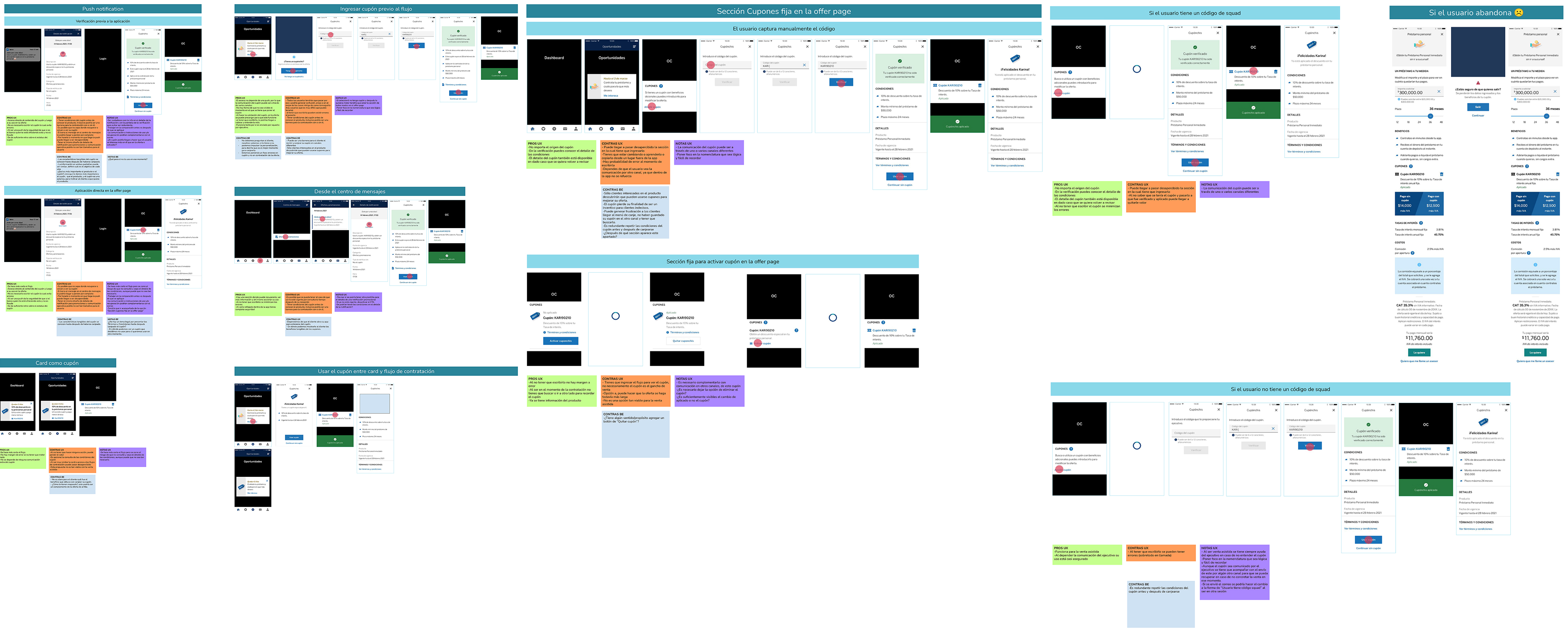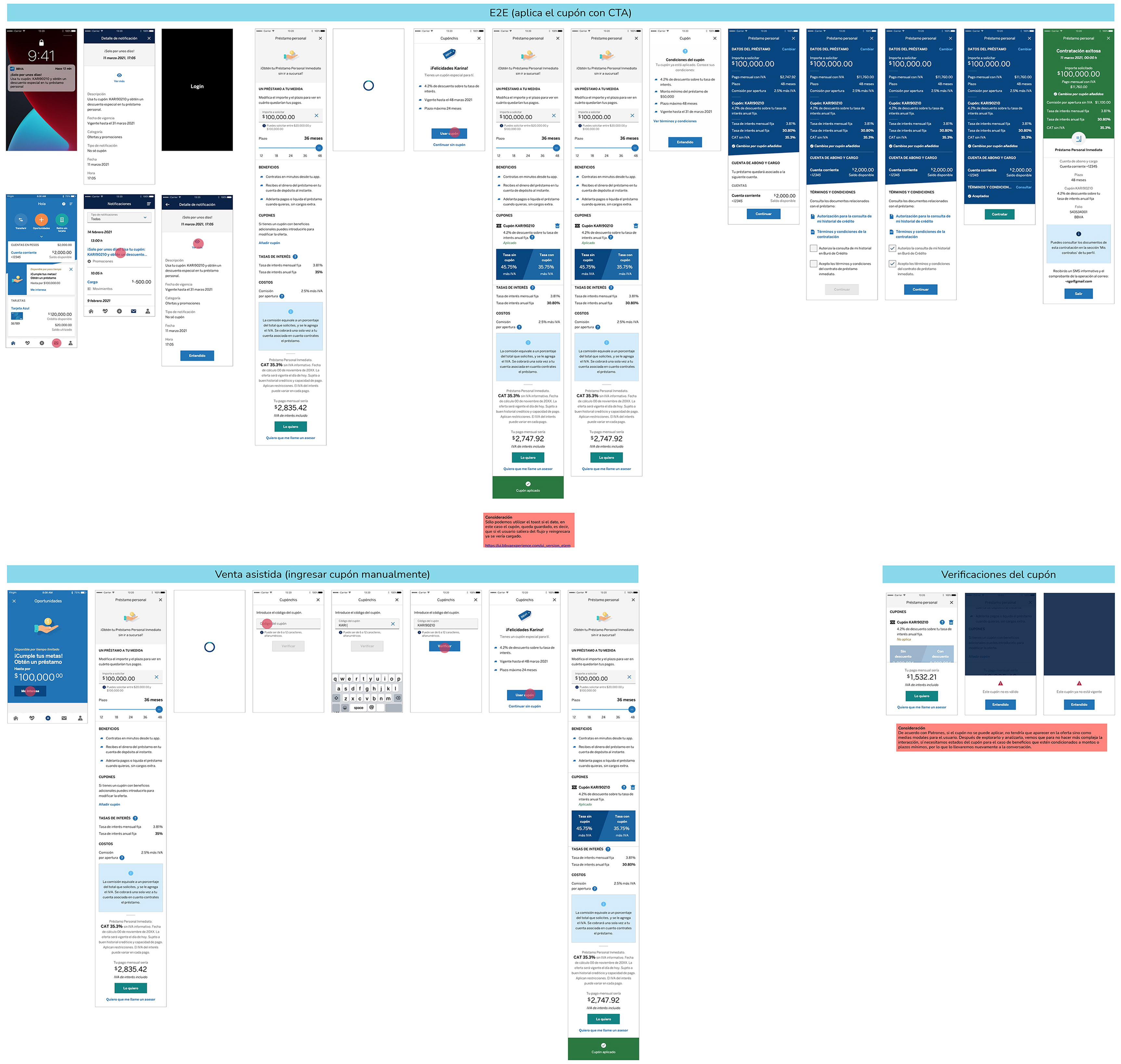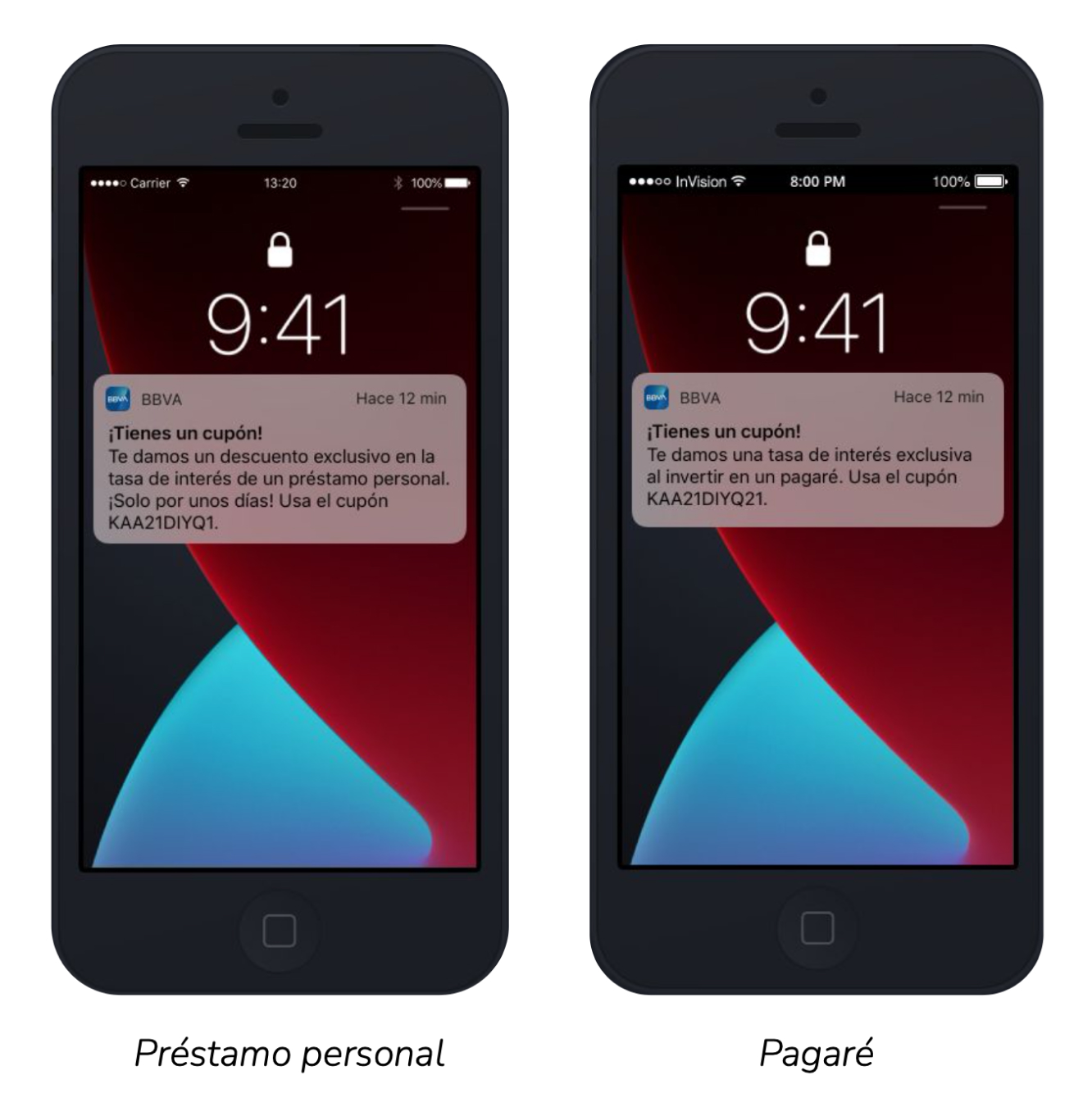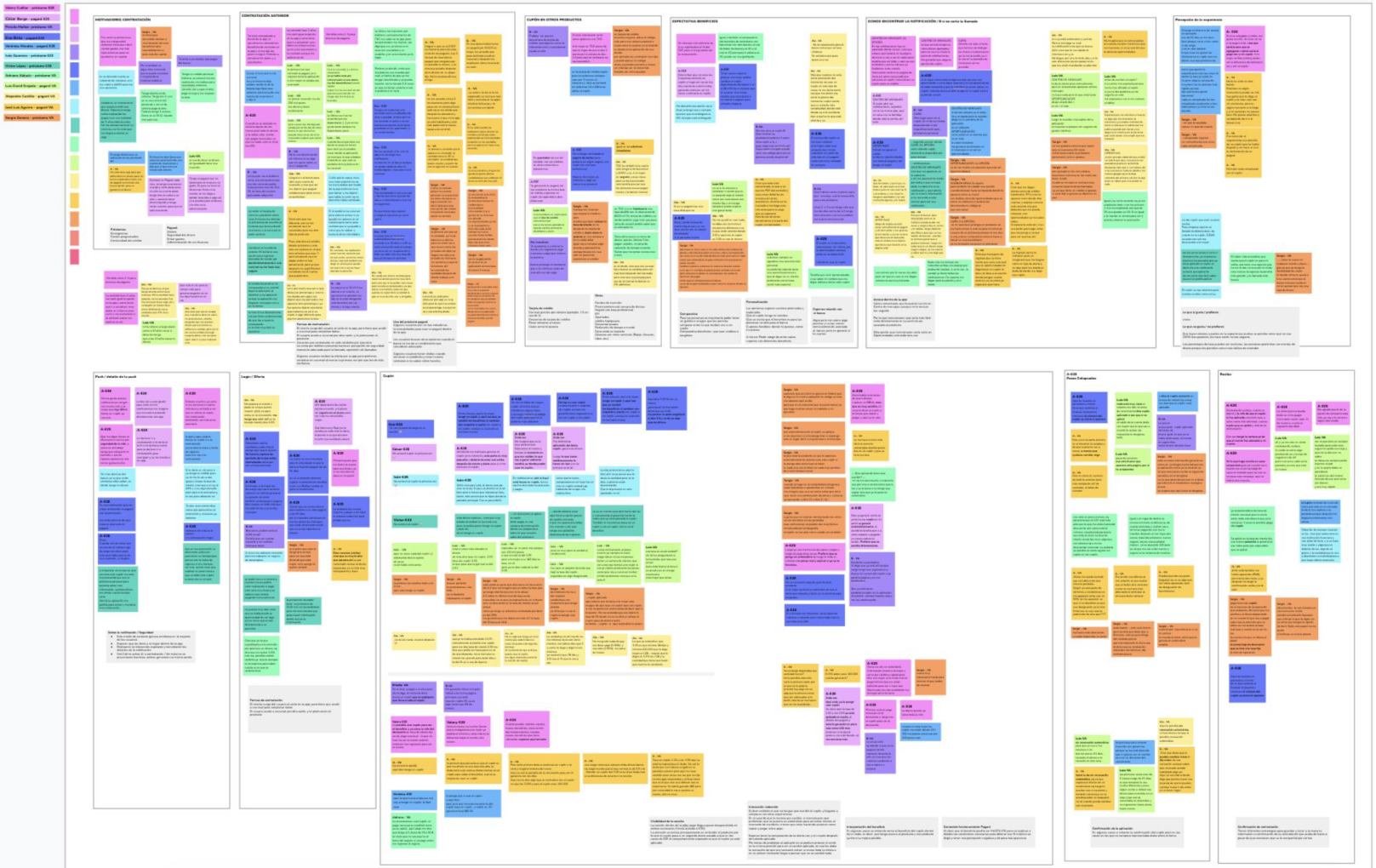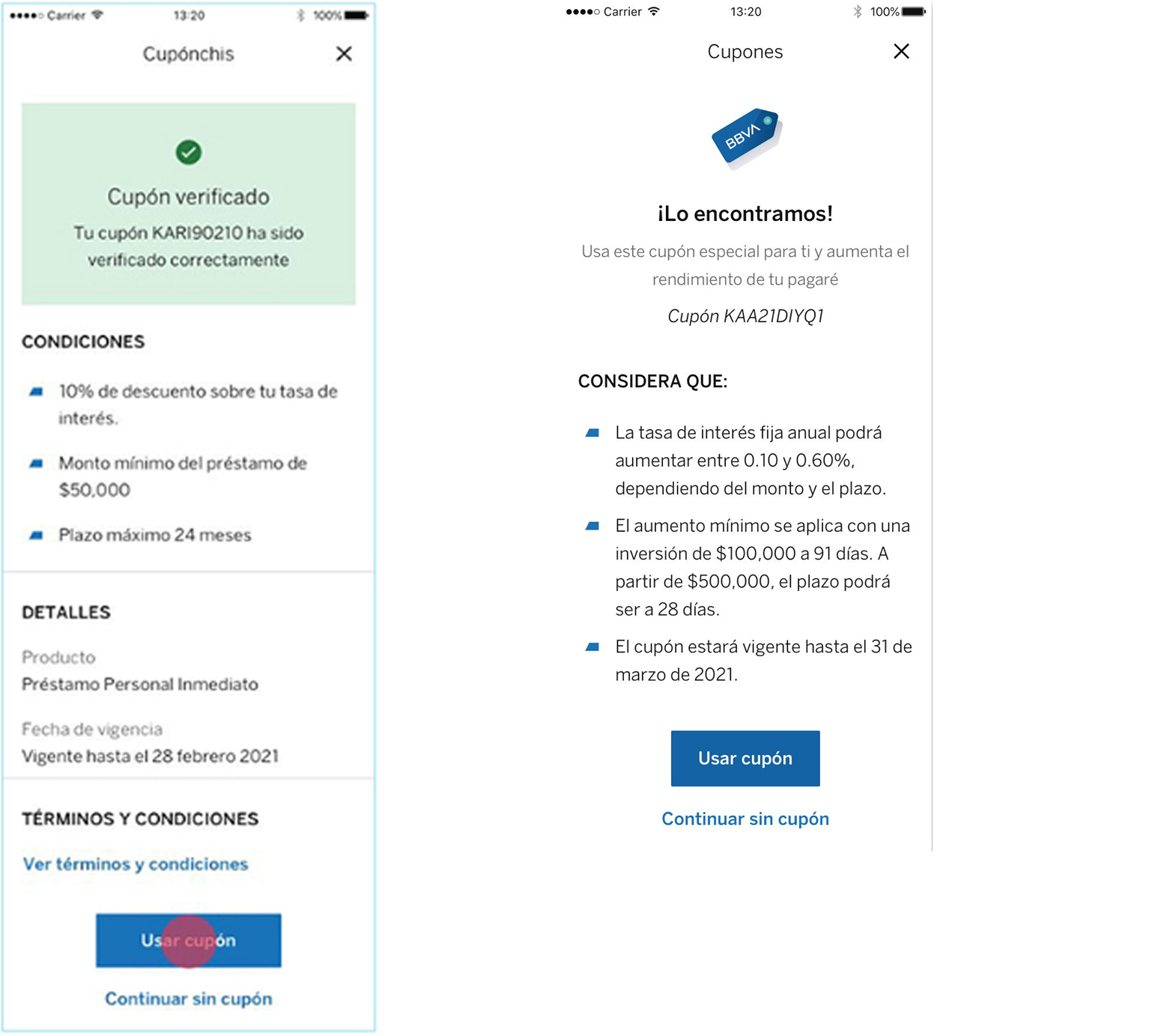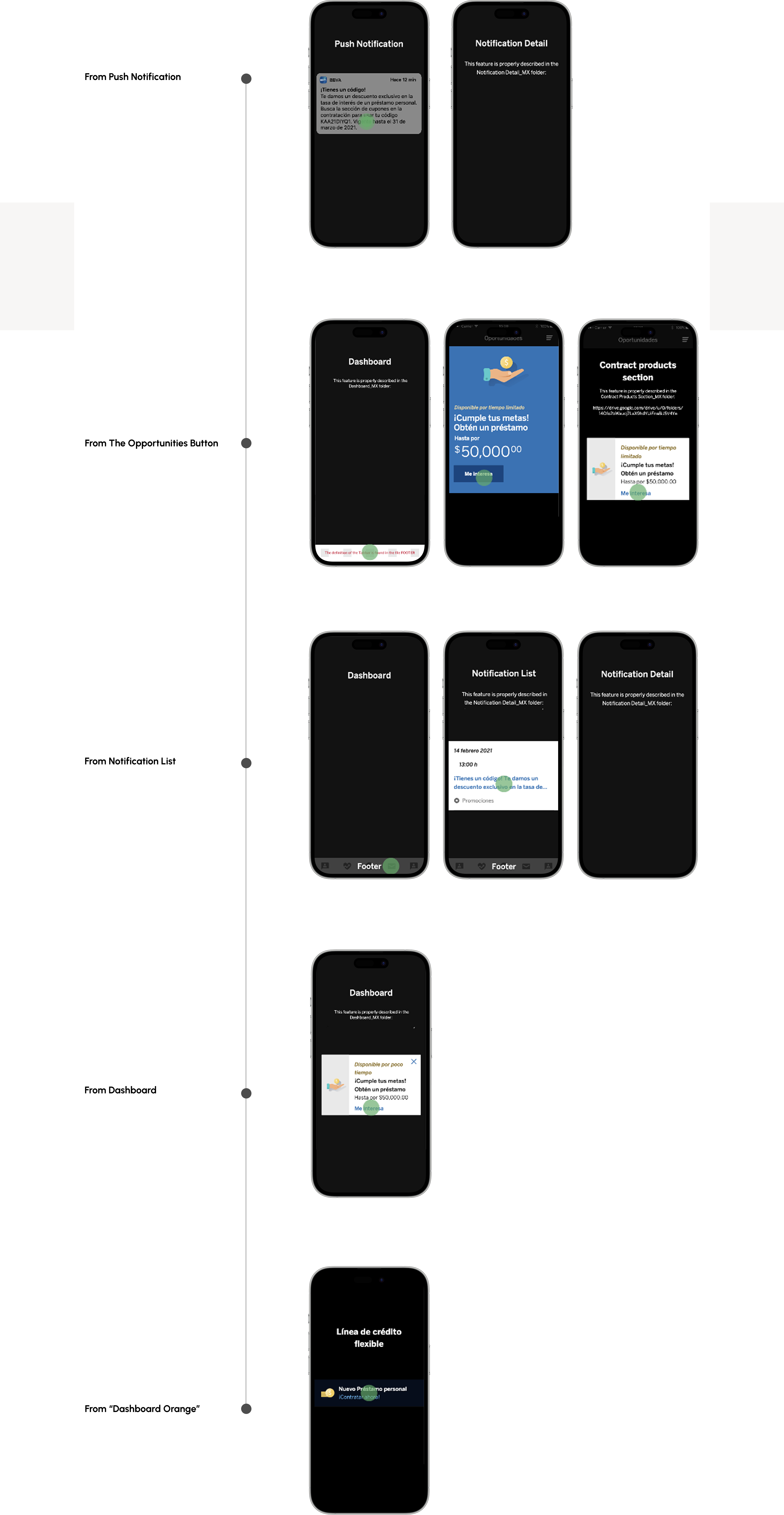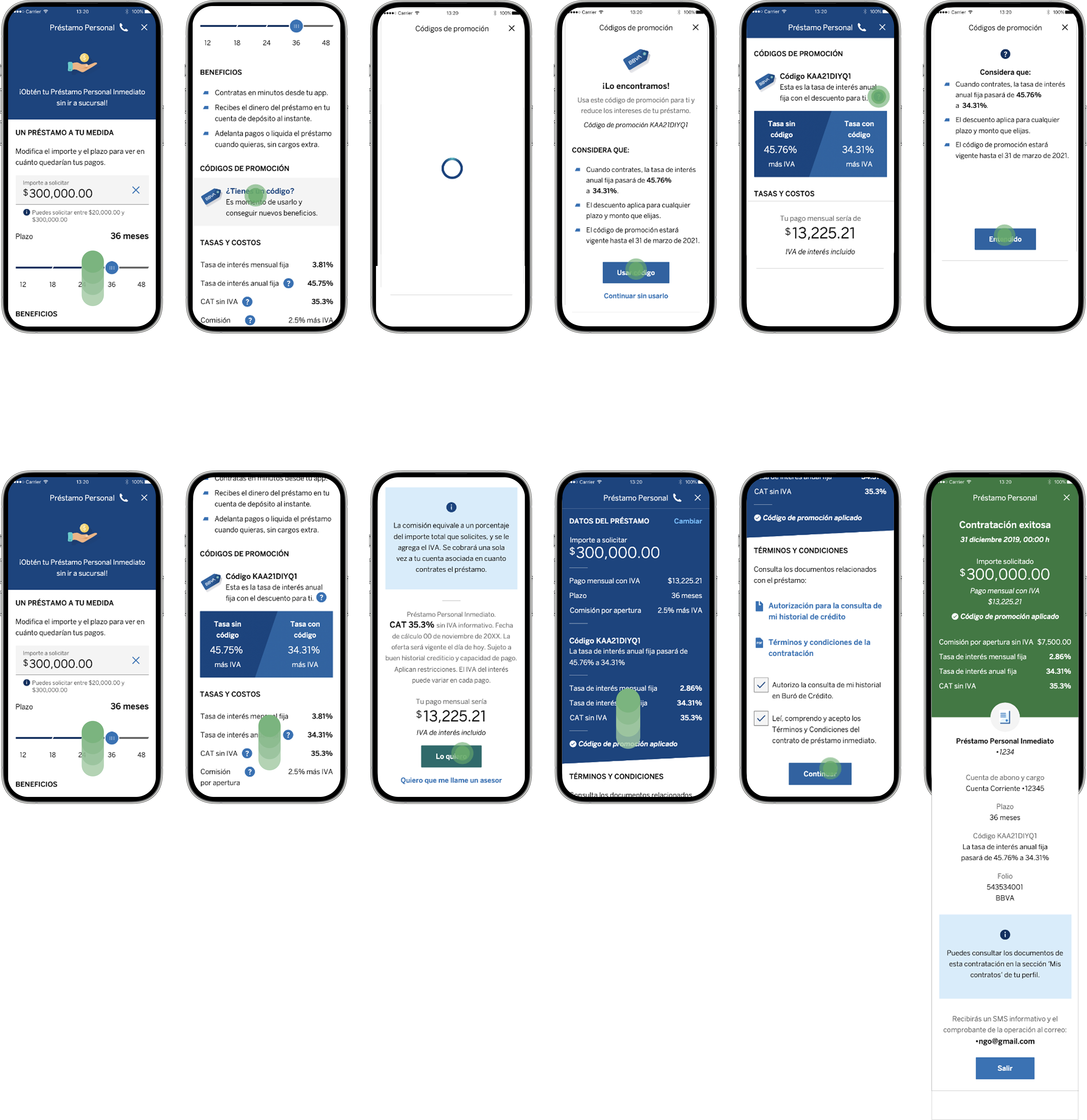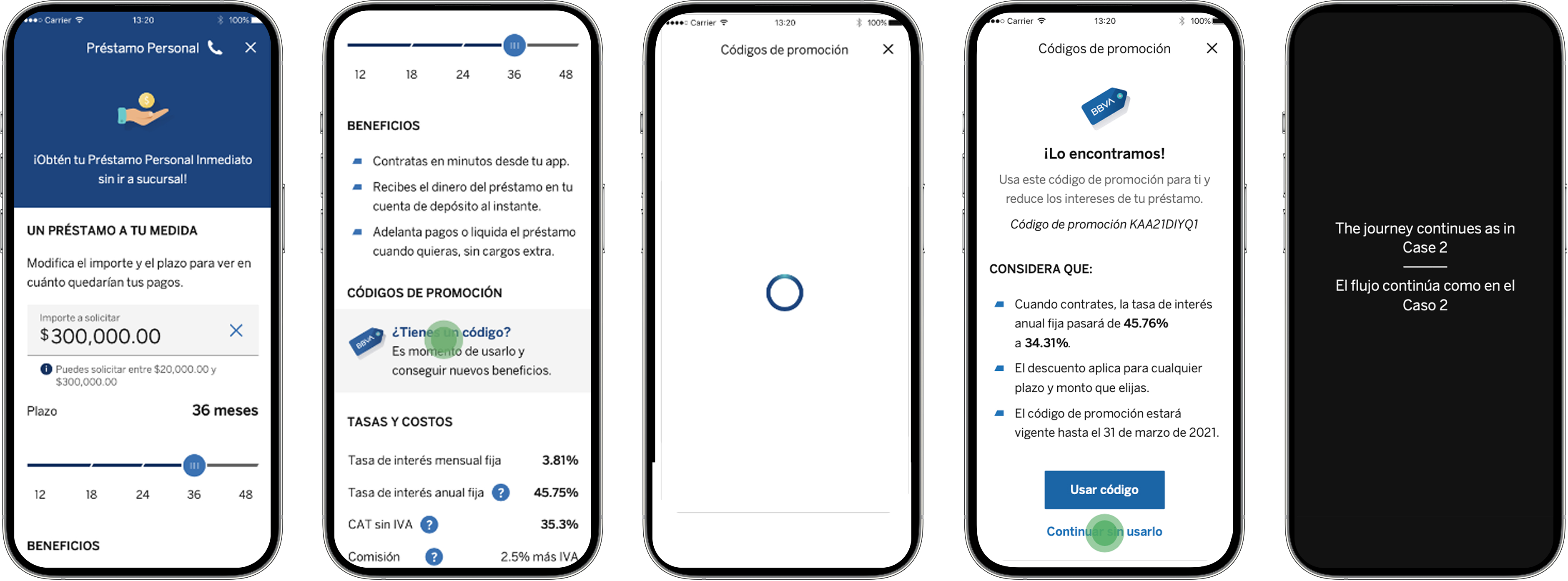A Mexican bank currently offers discounts on life, car, motorcycle, and home insurance through a variety of channels, including assisted sales, phone calls, and promotional codes generated on-site. These promotions are also integrated into credit card processes and the Benefits program, where users can access discounts based on their credit score. However, despite these efforts, there is an opportunity to streamline and expand the discount model, leveraging the bank's app to enhance digital sales and reach a broader audience.


